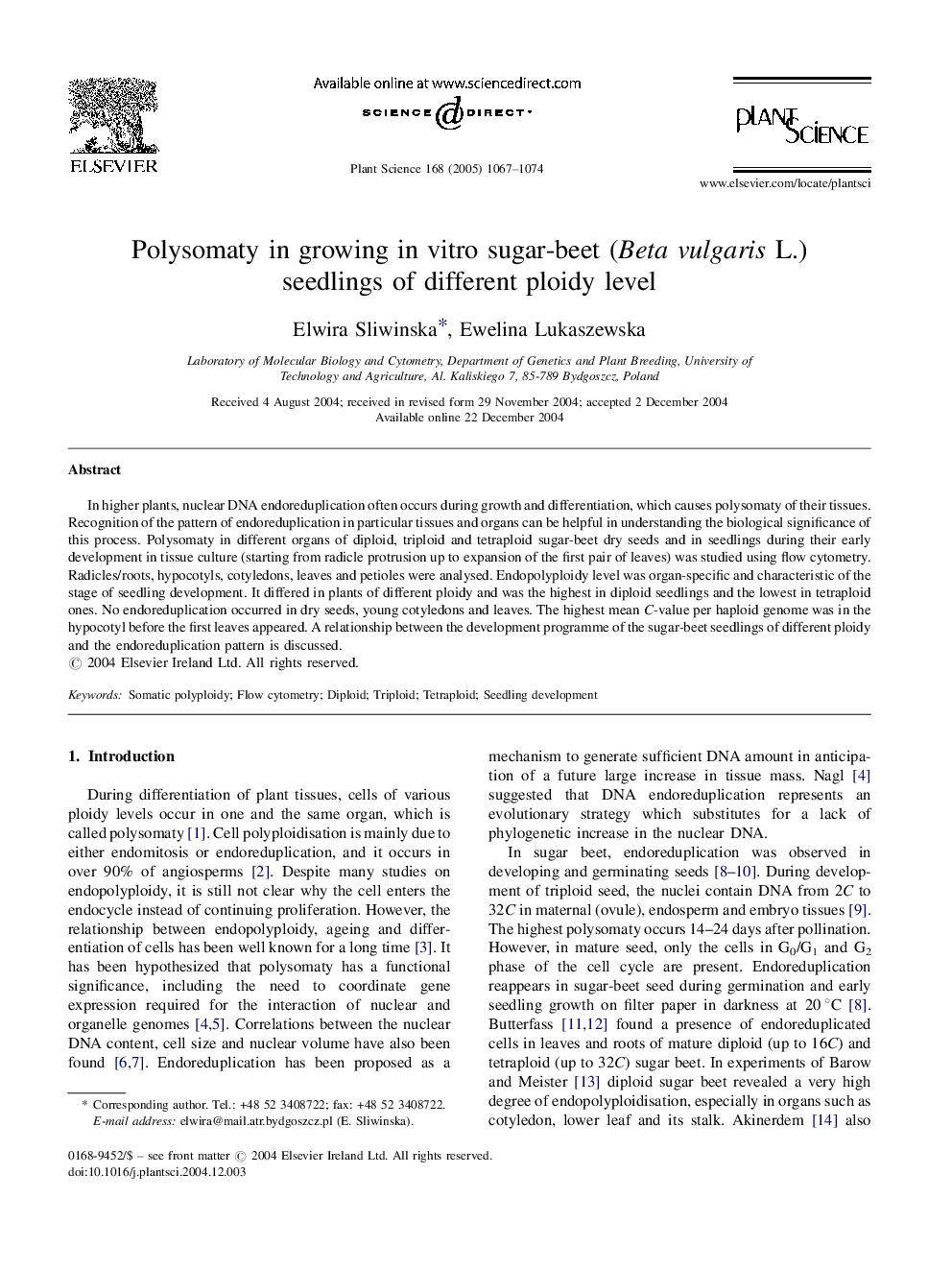| Article ID | Journal | Published Year | Pages | File Type |
|---|---|---|---|---|
| 10840959 | Plant Science | 2005 | 8 Pages |
Abstract
In higher plants, nuclear DNA endoreduplication often occurs during growth and differentiation, which causes polysomaty of their tissues. Recognition of the pattern of endoreduplication in particular tissues and organs can be helpful in understanding the biological significance of this process. Polysomaty in different organs of diploid, triploid and tetraploid sugar-beet dry seeds and in seedlings during their early development in tissue culture (starting from radicle protrusion up to expansion of the first pair of leaves) was studied using flow cytometry. Radicles/roots, hypocotyls, cotyledons, leaves and petioles were analysed. Endopolyploidy level was organ-specific and characteristic of the stage of seedling development. It differed in plants of different ploidy and was the highest in diploid seedlings and the lowest in tetraploid ones. No endoreduplication occurred in dry seeds, young cotyledons and leaves. The highest mean C-value per haploid genome was in the hypocotyl before the first leaves appeared. A relationship between the development programme of the sugar-beet seedlings of different ploidy and the endoreduplication pattern is discussed.
Related Topics
Life Sciences
Agricultural and Biological Sciences
Plant Science
Authors
Elwira Sliwinska, Ewelina Lukaszewska,
